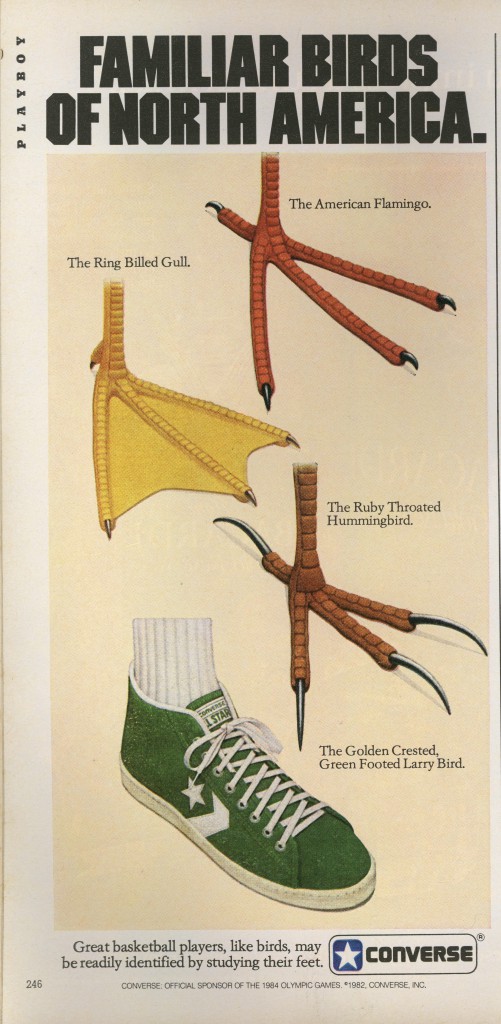
Clever 1982 Converse Ad

Just another nerd.

The BBC recently summarized yet another researcher’s look at the so-called “Hot Hands” hypothesis in basketball. The “Hot Hands” hypothesis claims that a player who successfully makes a shot in basketball is likely to be successful the next time he or she makes another shot attempt.
The prevailing wisdom is that this isn’t the case. In the research summarized by the BBC, for example, researchers looked at three point attempts by NBA players. Rather than having “Hot Hands”, what the study found was players who made a successful three point shot were more likely to miss rather than make their next three point attempt.
They discovered that players who scored a three-pointer and then attempted another were more likely to miss the follow-up shot. However, players who missed a previous three-pointer were more likely to score with their next attempt.
“[Basketball players] assume that even one shot is indicative of future performance, while not taking into account that the situation in which they previously scored is likely to be different than the current one,” said Dr Loewenstein.
He said this showed that despite years of experience, professional basketball players let the outcomes of their most recent actions affect their behaviour in ways that can negatively impact their performance.
One of the obvious issues in basketball is that the defensive team can change how it handles a player who has just made a three-point shot. A team that lets a player step up and make a relatively uncontested three-point shot initially might react by not allowing the next attempt by the same player to go uncontested.
One area in basketball where “Hot Hands” can be studied without worrying about the changing circumstances is in free throws. Gur Yaari and Shmuel Eisenmann recently published their research looking at whether there was a “Hot Hands” effect with free throws in the NBA, and found that such an effect does, in fact, appear to exist, but for different reasons than fans and players believe,
Strong evidence for the existence of a “hot hand” phenomenon in free shots of NBA players were found. More precisely, several statistically nontrivial features of the data were found and can be summed into one concept: heterogeneity. The heterogeneous behavior was found both in “space” (across players) and time (along one season). In particular it has been shown that
- If one looks at the aggregated data he/she is likely to observe patterns that do not necessarily exist at the individual level.
- The probability of success increases with the order of throw attempt in a sequence (NS).
- Even if one looks at each individual sequence separately, “hot hand” patterns are still visible (CP): probability of success following a success is higher than the probability of success following a failure.
- These patterns could have resulted from “better and worse” periods and not necessarily from positive/negative feedback loops.
So the “hot hands” phenomenon does appear to be real, but could be better summarized as a “hot night” or “hot half”. Sometimes good NBA players are really good, and sometimes not very good at all. As Yaari and Eisenmann note near the end of their article,
In retrospect, it seems like a very long journey to walk through just in order to notice that human subjects have good periods and bad periods and that the time sequence results can not be produced from a binomial independent repeated trials with a constant probability of success.